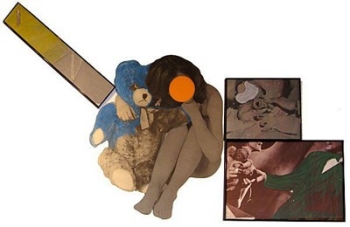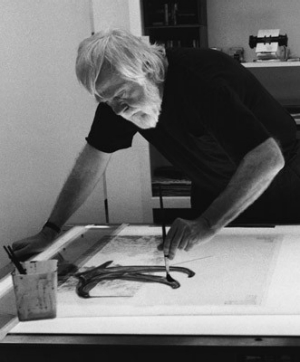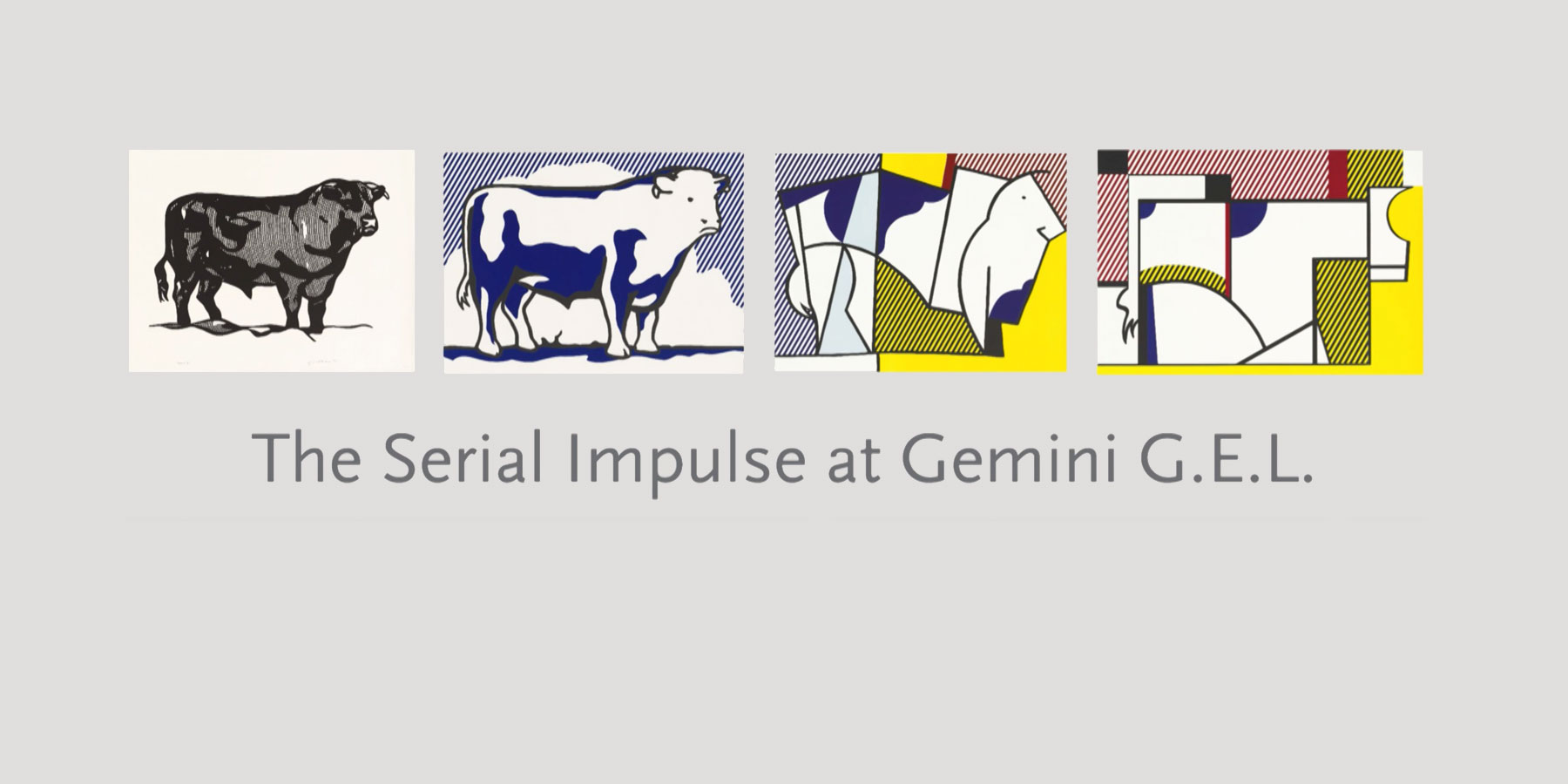John Baldessari (American, born 1931) has likened his process to being a “scavenger” in “an image junk pile,” selecting “random” pictures and “trying to put them back together in some way, reassembling them.” The images in the series A French Horn Player, A Square Blue Moon, and Other Subjects were selected from the extensive collection of advertisements, magazines, and movie posters that the artist began amassing in the 1980s. Specific sources are occasionally obvious—Darth Vader’s Imperial star destroyer (pictured right) is from the first Star Wars movie, for example—but Baldessari cropped his source material and masked out key features to frustrate easy identification.
John Baldessari, A French Horn Player, A Square Blue Moon, and Other Subjects, 1994/2012

John Baldessari, French Horn Player (with Three Contexts—One Uncoded) (detail), 1994, lithograph and screenprint, Gift of Gemini G.E.L. and the Artist, 2015. © Gemini G.E.L. and the Artist (click on detail for full image)
“I am continually fascinated with parts and wholes, with what holds two parts together and makes them a whole, and with what causes them to fall apart. It’s that tautness or tension that interests me, and spills out to a larger philosophical view of life.”—Baldessari, 1991

John Baldessari, Object (with flaw), 1988, lithograph on paper and plexiglas, National Gallery of Art, Corcoran Collection (Anonymous Gift), 2015
In half the prints, colored disks mar faces and figures. The disks follow the artist’s personal symbolic color code: red signals danger; green, safety; yellow means chaos, chance, or madness; and blue, perfection. These disks reduce individuals to generic types and recall surrealist and Dada techniques of defacing and fragmenting the body. In this series and other works, Baldessari employs asymmetrical or multipart frames, thereby subverting the notion of a seamless, unified whole suggested by a conventional rectangular frame. Baldessari’s works, as a result, can read as composite assemblies of disparate parts, as in Object (with flaw), or partial components cropped from a larger whole, as in Accordionist (with Crowd).

Baldessari in the artist studio during a proofing session at Gemini, May 1992. Photograph by Sidney B. Felsen.
In A French Horn Player, A Square Blue Moon, and Other Subjects, Baldessari destroys the illusionistic realism of photographic imagery by painting out or excising figures, or, in one instance, painting in a figure of his own. In Jump (with Volcano) and Two Bowlers (with Questioning Person), he silhouettes figures with highly textured painterly brushwork, a gestural intervention which establishes a jarring contrast between handmade marks and appropriated photographic imagery. By cropping, silhouetting, overpainting, and juxtaposing disparate found and fabricated images, Baldessari short-circuits the logic we conventionally rely on in understanding images and piecing together narratives.
Baldessari’s work underscores, in his words, the “tautness or tension” between parts and wholes. For the artist, “meaning occurs” when images are in “magnetic proximity,” an effect that is multiplied when this series is seen in its entirety. The provocative montage of fragmentary and obscured images can trigger for viewers myriad chance associations, speculative interpretations, and disjointed narratives. The series’s fragmentary nature and potential for open-ended interpretation is in keeping with today’s soundbite-driven, media-saturated society. Indeed, Baldessari likens the experience of viewing his work to “someone sitting in front of the TV making his or her own movie with the channel changer.”
Banner image: John Baldessari, Accordionist (with Crowd) (detail), 1994, screenprint, Gift of Gemini G.E.L. and the Artist, 2015. © Gemini G.E.L. and the Artist











